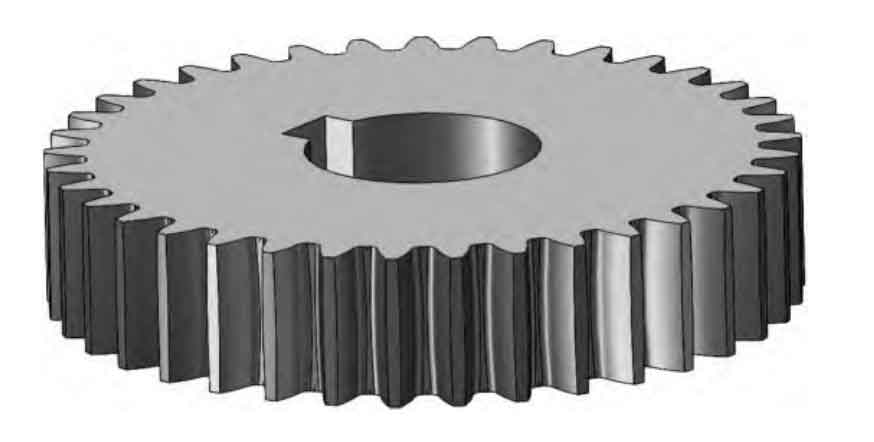This study investigates the dynamic behavior of high contact ratio cylindrical gears under tooth surface wear. By combining energy-based stiffness modeling and Archard wear theory, a comprehensive framework is developed to analyze the interaction between progressive wear patterns and nonlinear gear dynamics.

1. Dynamic Model Formulation
The single-degree-of-freedom dynamic model for cylindrical gears is expressed as:
$$m_e \ddot{x} + c\dot{x} + k(t)x = F_m + F_h(t)$$
Where dimensionless parameters are defined as:
$$ \tau = \omega_n t,\ \omega_n = \sqrt{K_m/m_e},\ \bar{x} = x/l $$
Resulting in the dimensionless equation:
$$ \bar{x}” + 2\zeta\bar{x}’ + K(\tau)f(\bar{x}) = \bar{F}_m + \bar{F}_h(\tau) $$
2. Wear Modeling for Cylindrical Gears
The Archard wear model is adapted for cylindrical gear contact:
$$ h = \frac{2a\lambda n t I_H}{\epsilon_\alpha} $$
| Parameter | Driving Gear | Driven Gear |
|---|---|---|
| Teeth (z) | 32 | 25 |
| Module (mm) | 3.25 | 3.25 |
| Pressure Angle | 20° | 20° |
| Profile Shift | -0.19 | -0.14 |
3. Time-Varying Mesh Stiffness
Modified energy method calculates stiffness components:
$$ \frac{1}{k} = \sum\left(\frac{1}{k_b} + \frac{1}{k_s} + \frac{1}{k_a}\right) + \frac{1}{k_h} + \frac{1}{k_f} $$
Wear-modified mesh stiffness for cylindrical gears:
$$ K(t) = \begin{cases}
k(Y) + k(Y+T) & 0 \leq Y \leq T(\epsilon-2) \\\\
k(Y-T(\epsilon-2)) + k(Y) + k(Y+T) & T(\epsilon-2) < Y \leq T
\end{cases} $$
4. Dynamic Response Analysis
Key parameters for cylindrical gear dynamics:
| Condition | Light Load | Heavy Load |
|---|---|---|
| Dimensionless Force | 0.04 | 0.08 |
| Damping Ratio | 0.05 | 0.05 |
| Backlash | 0.5 | 0.5 |
Stiffness reduction due to wear:
$$ \Delta K = \begin{cases}
0.23\% & (2\times10^6 \text{ cycles}) \\\\
0.72\% & (6\times10^6 \text{ cycles}) \\\\
1.26\% & (10^7 \text{ cycles})
\end{cases} $$
5. Bifurcation Characteristics
The dynamic behavior of cylindrical gears evolves through distinct phases:
$$ \text{Light Load: } \mathcal{P}_5 \rightarrow \text{Chaos} \rightarrow \mathcal{P}_3 \rightarrow \text{Chaos} $$
$$ \text{Heavy Load: } \mathcal{P}_2 \text{ (stable)} $$
Key findings for cylindrical gear operation:
- Wear-induced stiffness reduction follows logarithmic pattern
- Light load conditions show 0.8-1.5 dB vibration amplitude increase
- Heavy load maintains periodic motion with <0.2 dB variation
6. Conclusion
This analysis demonstrates that cylindrical gears with high contact ratios exhibit complex nonlinear dynamics under progressive wear. The interaction between time-varying mesh stiffness and surface degradation creates distinct operational regimes, particularly critical in light-load applications. The developed model provides essential insights for predictive maintenance of cylindrical gear systems.
